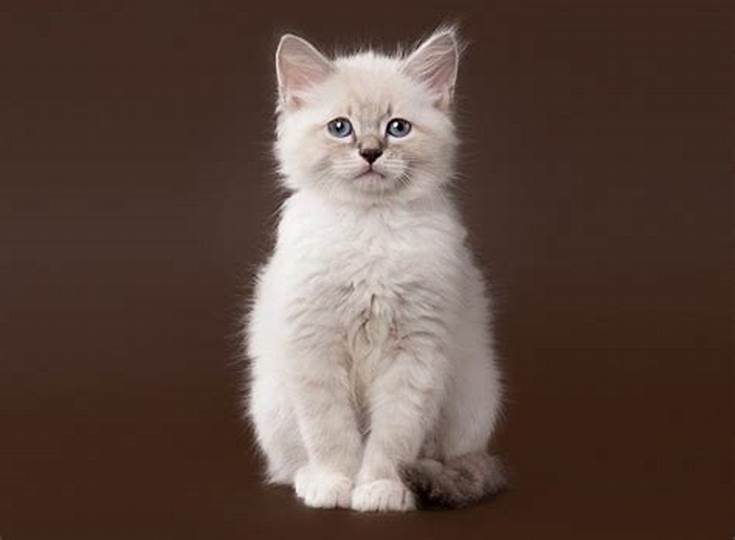
Nevada Cat|Nybyon Cat
In Europe in the 1960s, especially the United Kingdom, Russian Blue has a tendency to return to its original short stature and dark coat features.
Alias Cartel Cat, Charles Cat
English name Chartreux
Weight 4-7kg
Fitness big cat
Longhair Shorthair
Origin France
| Stickness: | Happiness: | ||
| hair loss Degree: | Body odor level: | ||
| Beauty Frequency: | Kids Friendly: | ||
| Be kind to strangers: | Animal Friendly: | ||
| Amount of exercise: | Trainability: | ||
| saliva Degree: | Cold tolerance: | ||
| Heat Resistance: | city Fitness: |
History: Some CHARTREUX was introduced to France during the Crusades. In the 1920s, French breeders combined CHARTREUX cats with crosses, and the formal breeding program was not introduced until 1926. In 1926, the two sisters, surnamed LEGER, began to breed with the rendering of blue cats that strayed around BELLE-ILE-SUR-MER in MORBIHAN, France. After defining their physical characteristics, Dr. JUMAUD (1930) named these cats FELIS CATTUS CARTUSINORUM. The breed was put on public display in Paris in 1931. The first breed standard was published in 1939. The variety and blue were crossed so frequently in the 1960s and 1970s that in 1970 FIFe merged the two varieties. Is the CHARTREUX cat breed just doomed? Not so. SIMONNET, president of the CHARTREUX Cat Club, provided FIFe with strong evidence of the breed's authority, prompting FIFe to reinstate the decision to separate the two breeds and ban them from further interbreeding. The first CHARTREUX cat entered the United States in 1970. Both CFA and TICA recognize the breed.
|
Origin: Original in France, said to be made by Breed bred by monastic monks of the French Chartres. In France, although the mouse-catcher is very popular with farmers, it was not bred as a mouse cat in order to maintain its shiny coat. Instead, it was often kept by people until about 1970. spread to the United States. In ancient times its short wool-like fur was sold as a water wrasse! CHARTREUX cats have been living in France for centuries. In the 16th century, JOACHIMDU BELLAY mourned for his little grey cat BELAUD; in the 18th century, BUFFON described the CHARTREUX cat as the cat of France in the book of natural history; To distinguish it, call it FELIS CATTUS CAERULEUX, or blue cat. |
Personality: docile, easy to get along with, independent, strong personality, but not very vocal. Affectionate and sincere to the owner. Conservative, prefers solitude and quiet. Strong, tenacious and vigorous, very adaptable to the cold outdoor living environment. Strong body, strong endurance, can adapt to a variety of different environments. Gentle, very well-behaved and educated. It is easy to get close to people, and it will show its love and dedication to the owner. Although it will be wary of strangers, it will not attack people. If you can treat it gently, it will quickly get close to you. |
Standard: Head: Wide, round, non-spherical, like an inverted trapezoid. The skull is non-hemispherical, slightly rounded, and flat between the ears. Cheeks are plump, rounded and set low, with large double chins in adult males. The nose is straight and broad, not turned upwards. Minor nasal interruptions are acceptable but discouraged. The connection between the muzzle and the head is straight, tapering to the end but not pointed. The moustache is well padded and the demarcation between the cheeks and chin is more pronounced, thus forming the unique smile of this breed. Strong jaws, especially in Tomcats over two years old. Ears: Small to medium in size. The location is high. Erect, with rounded ears. The base is narrow. Eyes: Large and round, with an upward sloping outer tip. Color: Orange to Gold. Greens are not allowed, nor pale colors. Neck: Short and stocky. The body is strong and burly, especially the Tomcat. Broad shoulders and thick chest. Back straight. Strong bones. The muscles are dense. Legs and Claws: Legs straight, short to medium in length, strong and very muscular. Small and round, with broad claws. Tail: Medium length. The rear is thick, tapering slightly towards the tip, and the tip of the tail is rounded. Coat: Short and thick, very dense (with water wrasse fur), glossy, slightly wooly, waterproof, standing upright due to excess undercoat. Color: Any blue, from soot to slate gray, is acceptable, but bright blues are preferred. Color consistency is the key. The nose is slate grey and the pads are rose grey. The skin is blue. Kittens are born with fetal moles, which disappear by 6 months to one year of age. The orange color of the eyes does not appear until 3 months of age and replaces the usual blue-gray wink in kittens. Green wink, dull or faded wink. Coat: White locks. Hair tip coloration, mole stripes or variations in coat color. Brown or red as heavy color. Medium to large in size. Weight 3 to 7.5 kg. Medium length. Male cats are larger and larger than female cats. Strong and powerful in appearance. The facial expression is sweet and smiling. Coat characteristics: White locks. Hair tip coloration, mole stripes or variations in coat color. Brown or red as heavy color. |